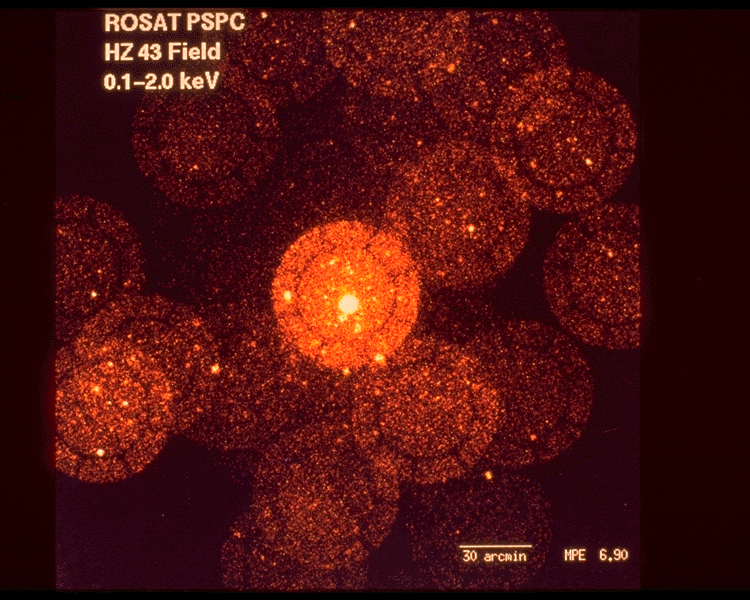HZ 43 Field

A mosaic of PSPC pointings of the white dwarf HZ 43, taken during the ROSAT calibration phase of observations. Stars like HZ 43 have very soft X-ray spectra and represent the end of one line of stellar evolution. Whereas in most single stars that are X-ray sources, the X-ray emission comes from the surrounding corona of 1-10 million degree gas, in stars like HZ 43, the observed X-rays most likely come from its deep interior. The outer layers of HZ 43 contain little or no elements other than hydrogen or helium and hence are essentially transparent to the X-rays that are emitted by the much hotter inner layers.
Curator:
HEASARC Guest Observer Facility
Please use the Feedback link if you have questions on ROSAT.

